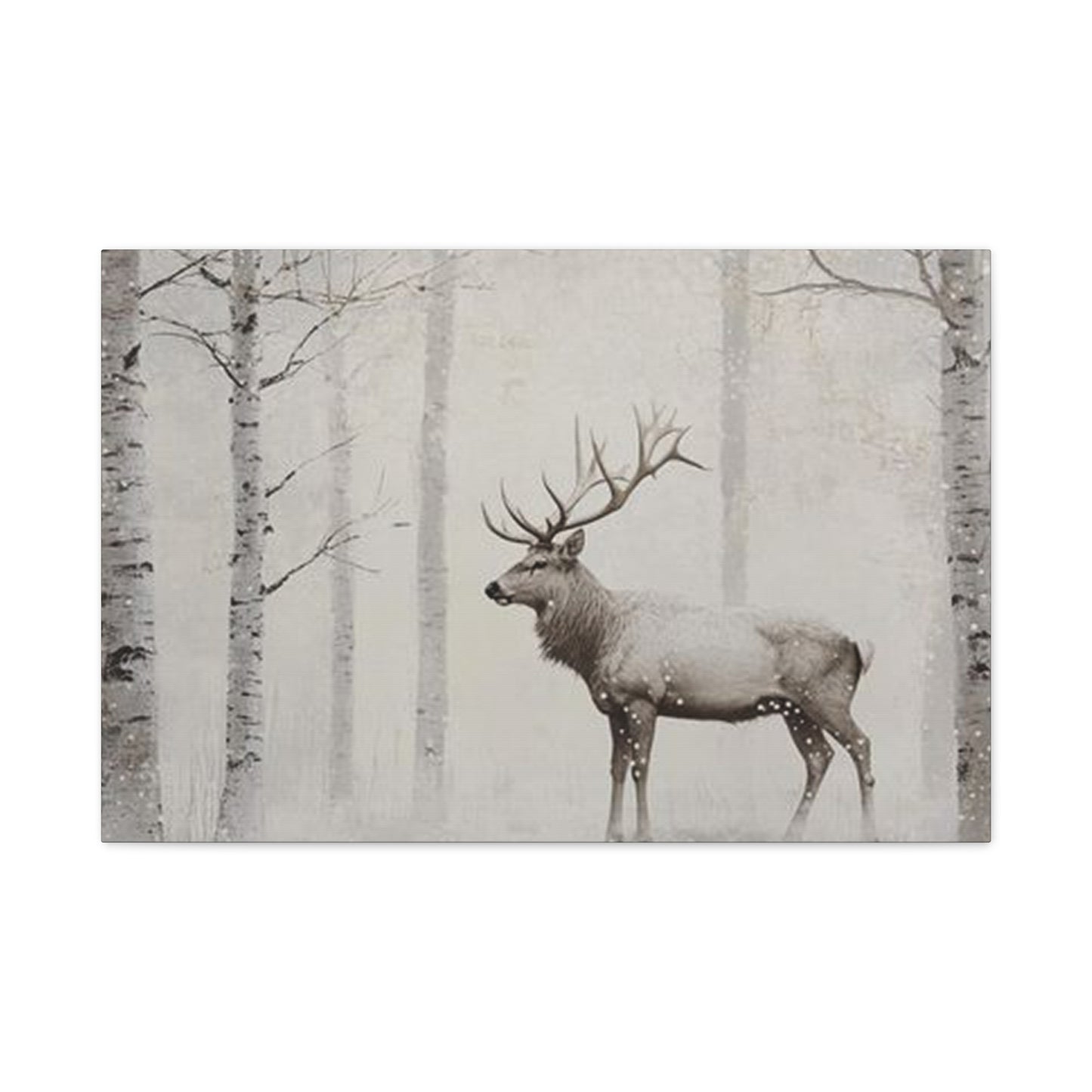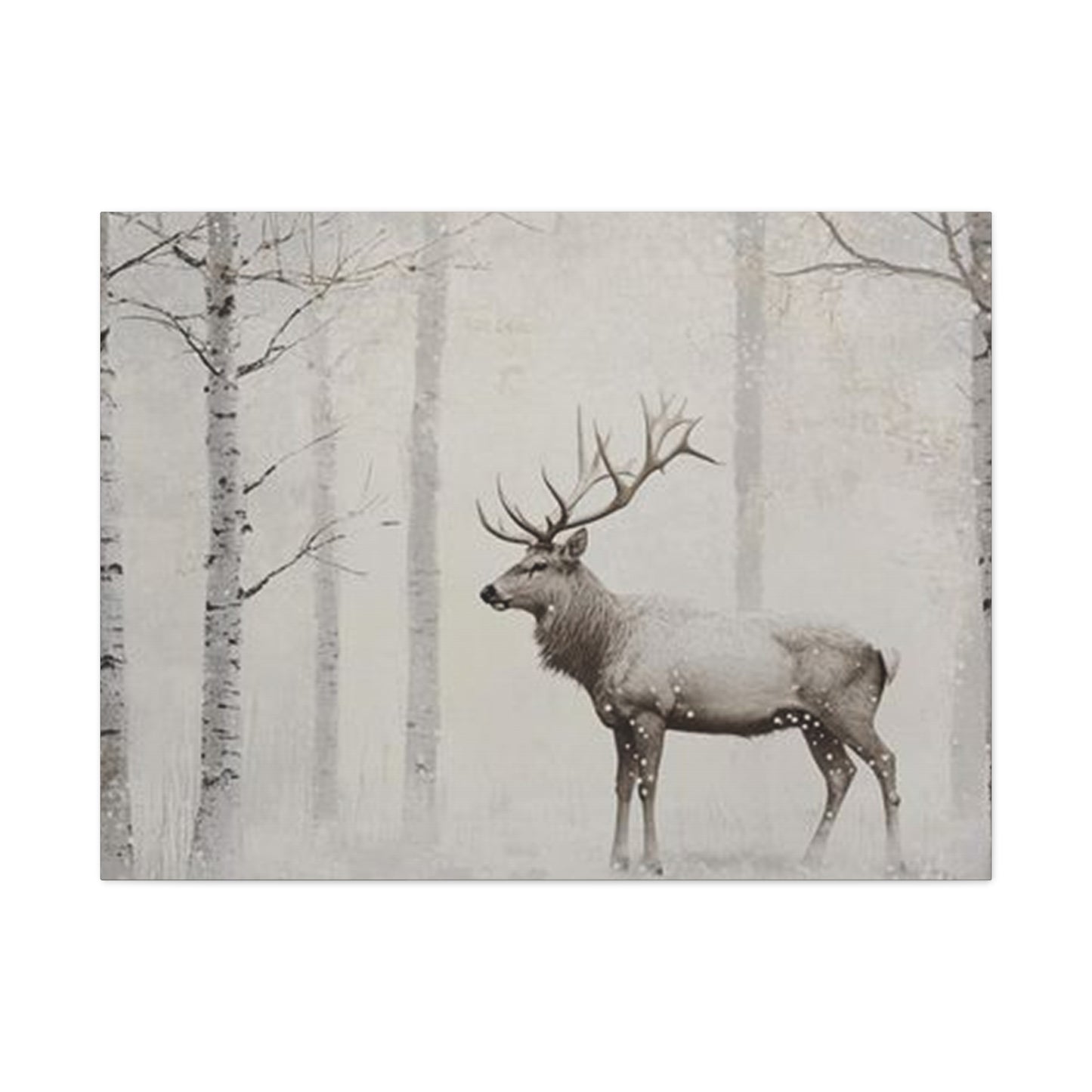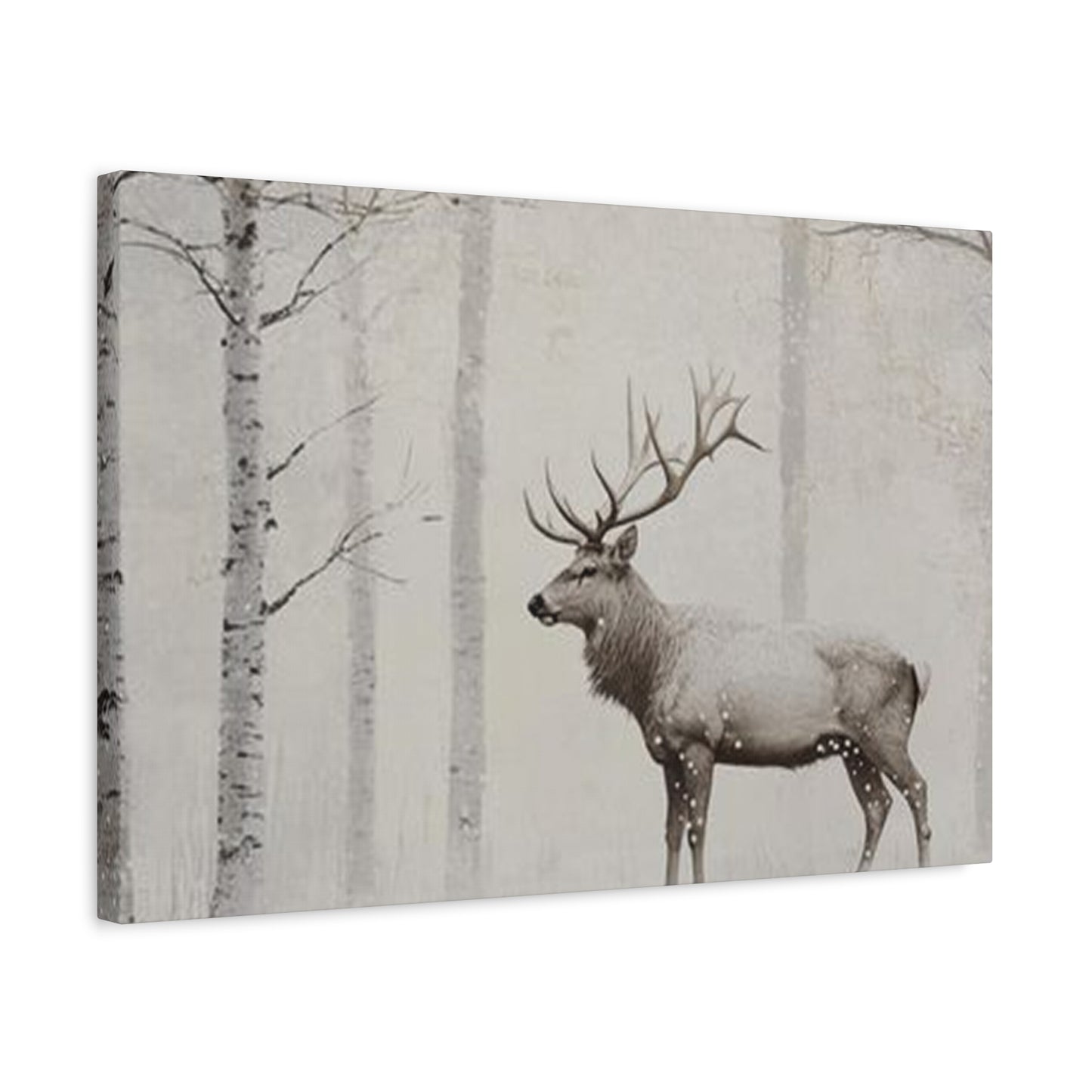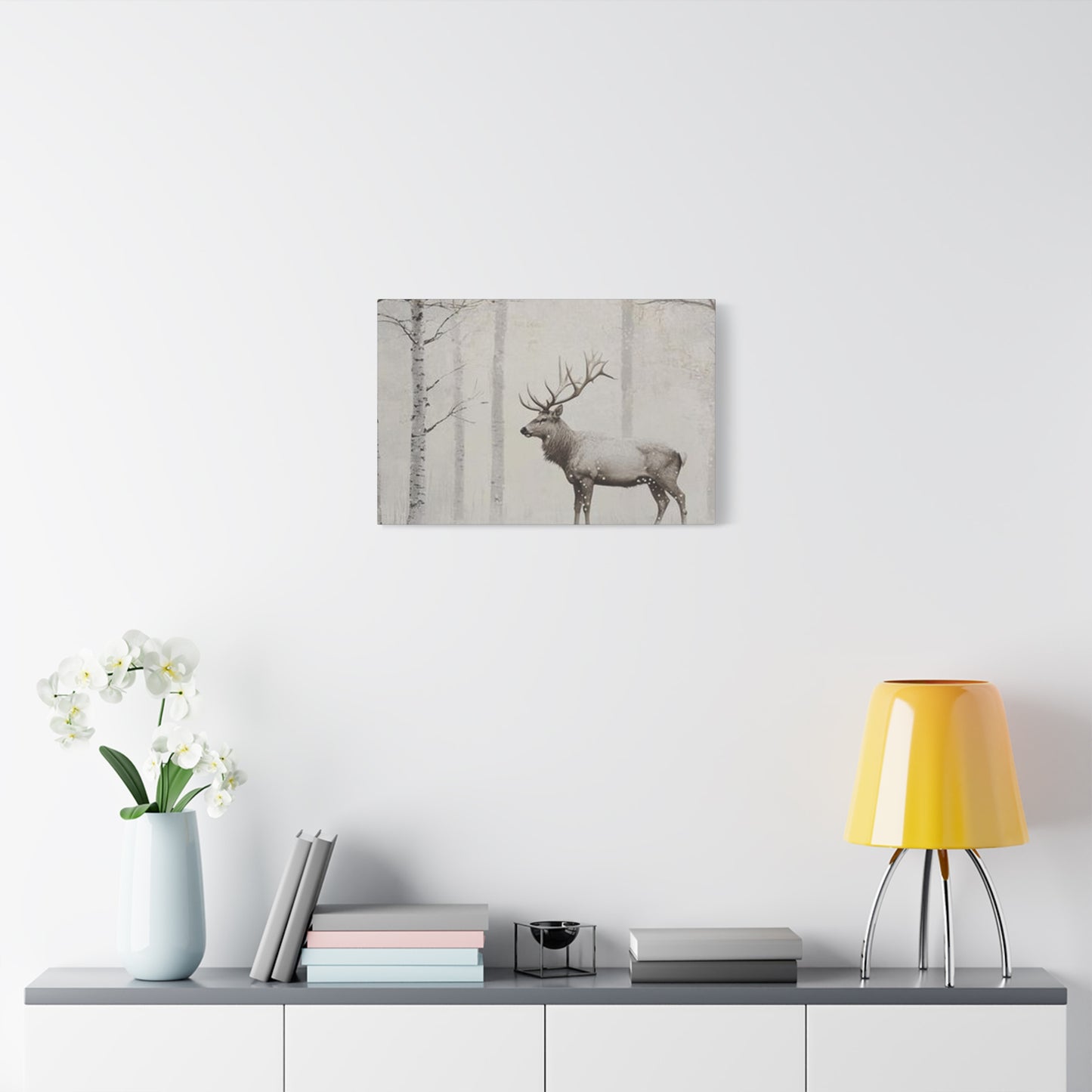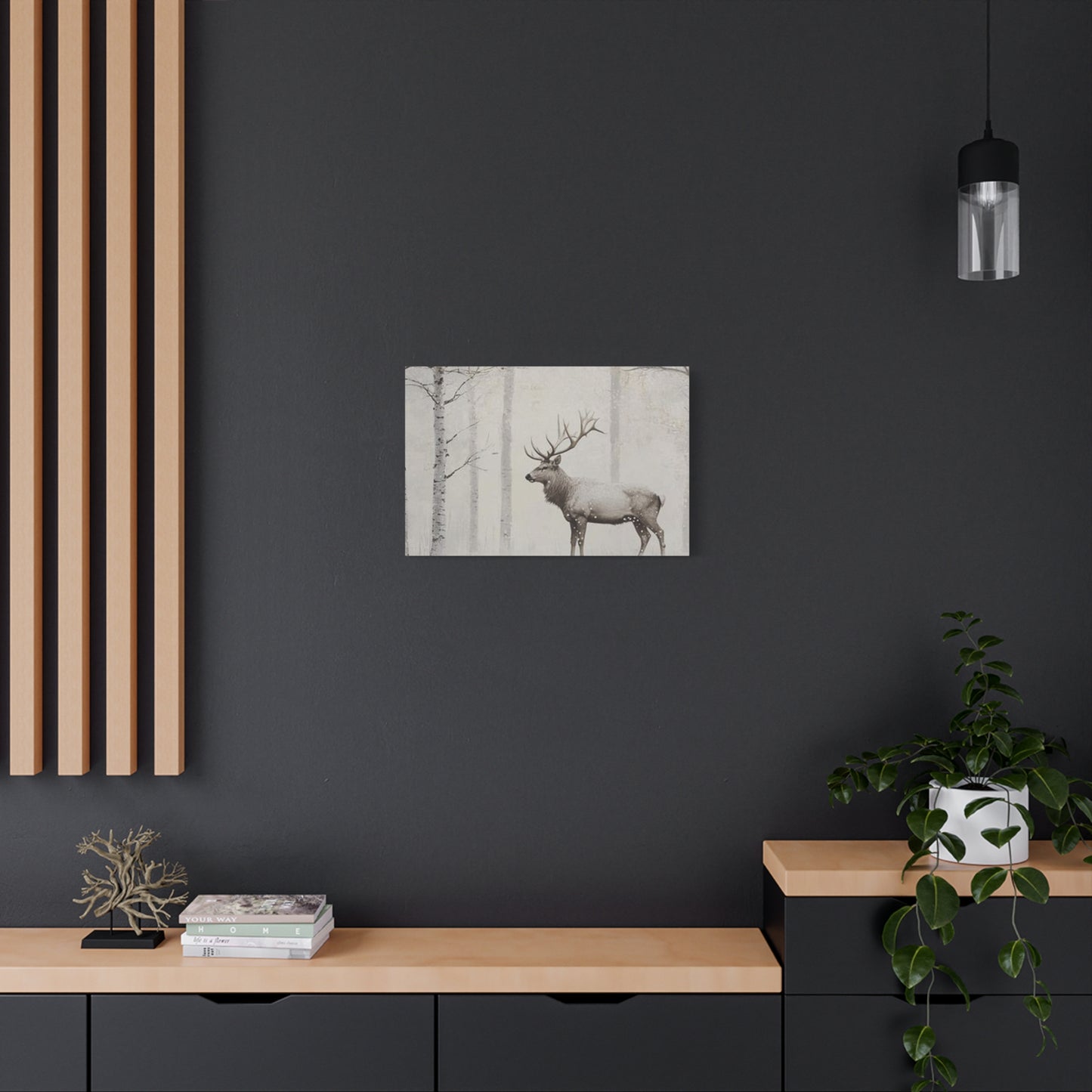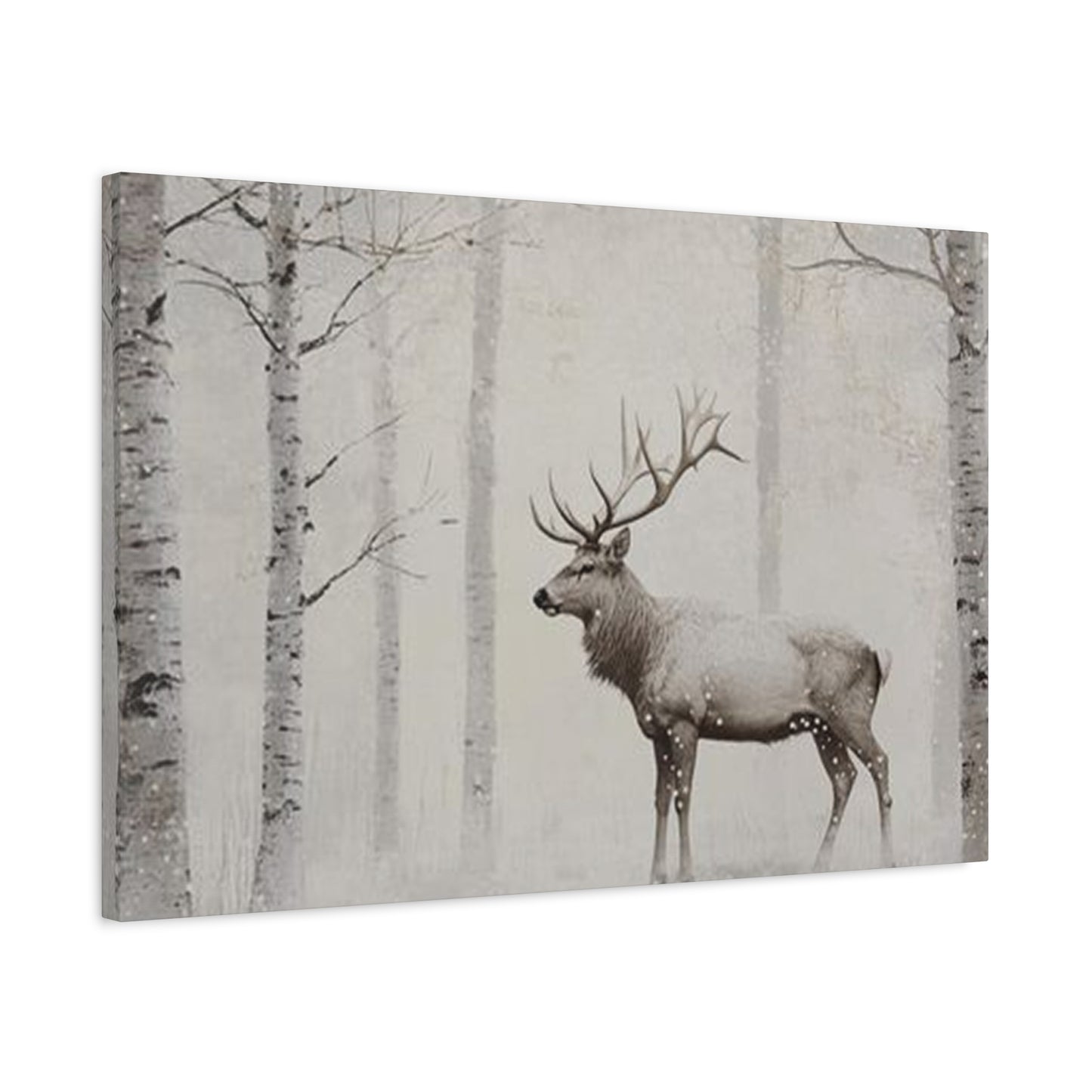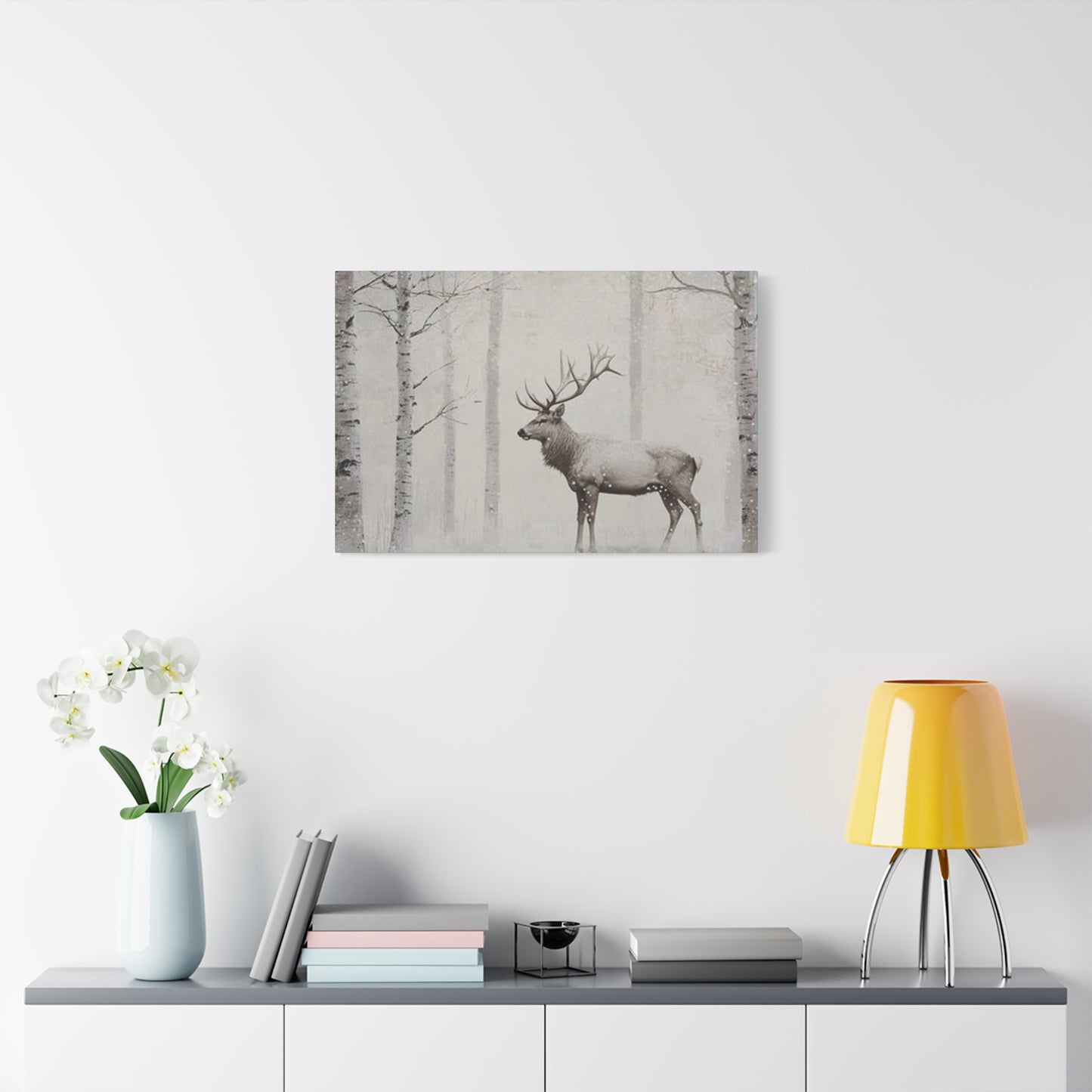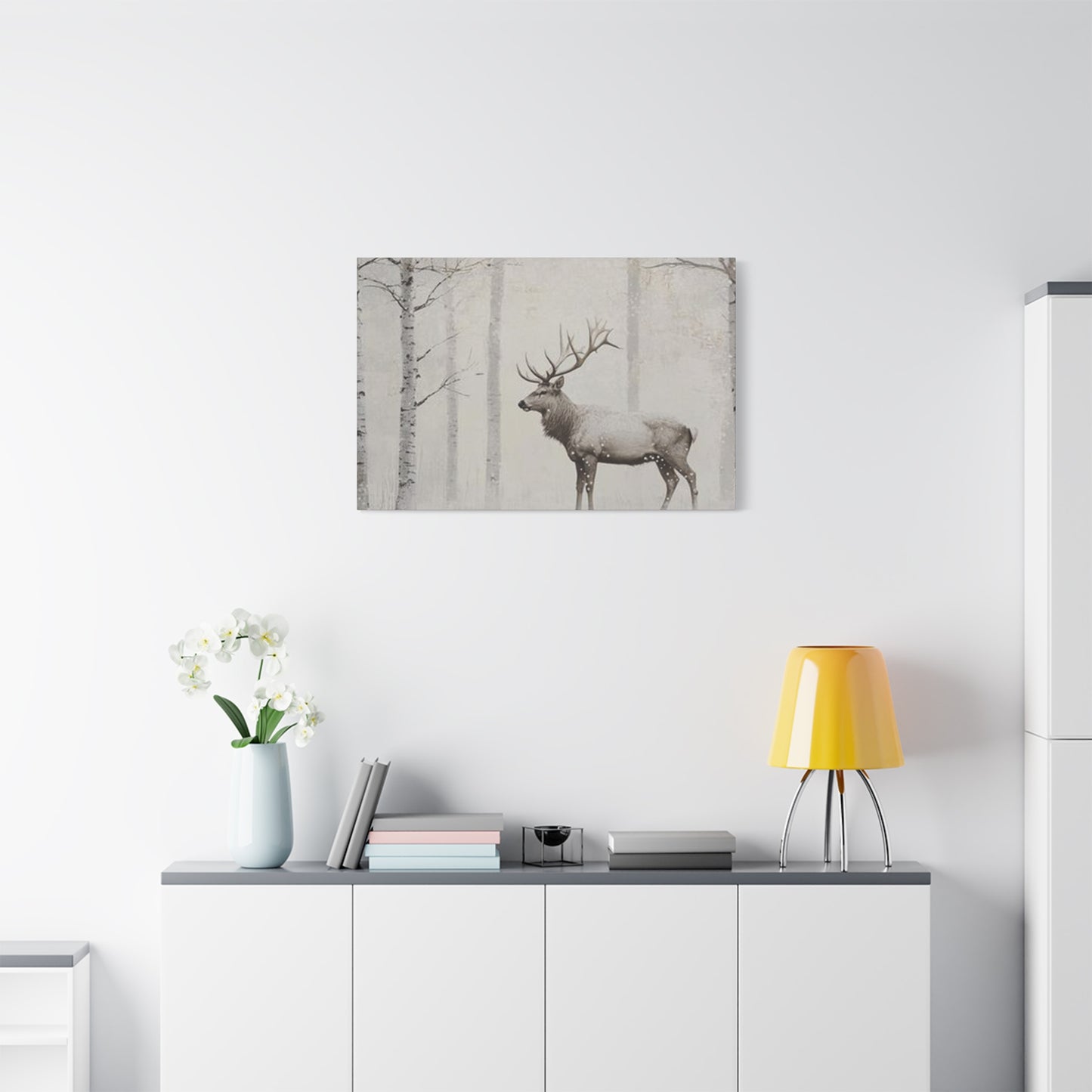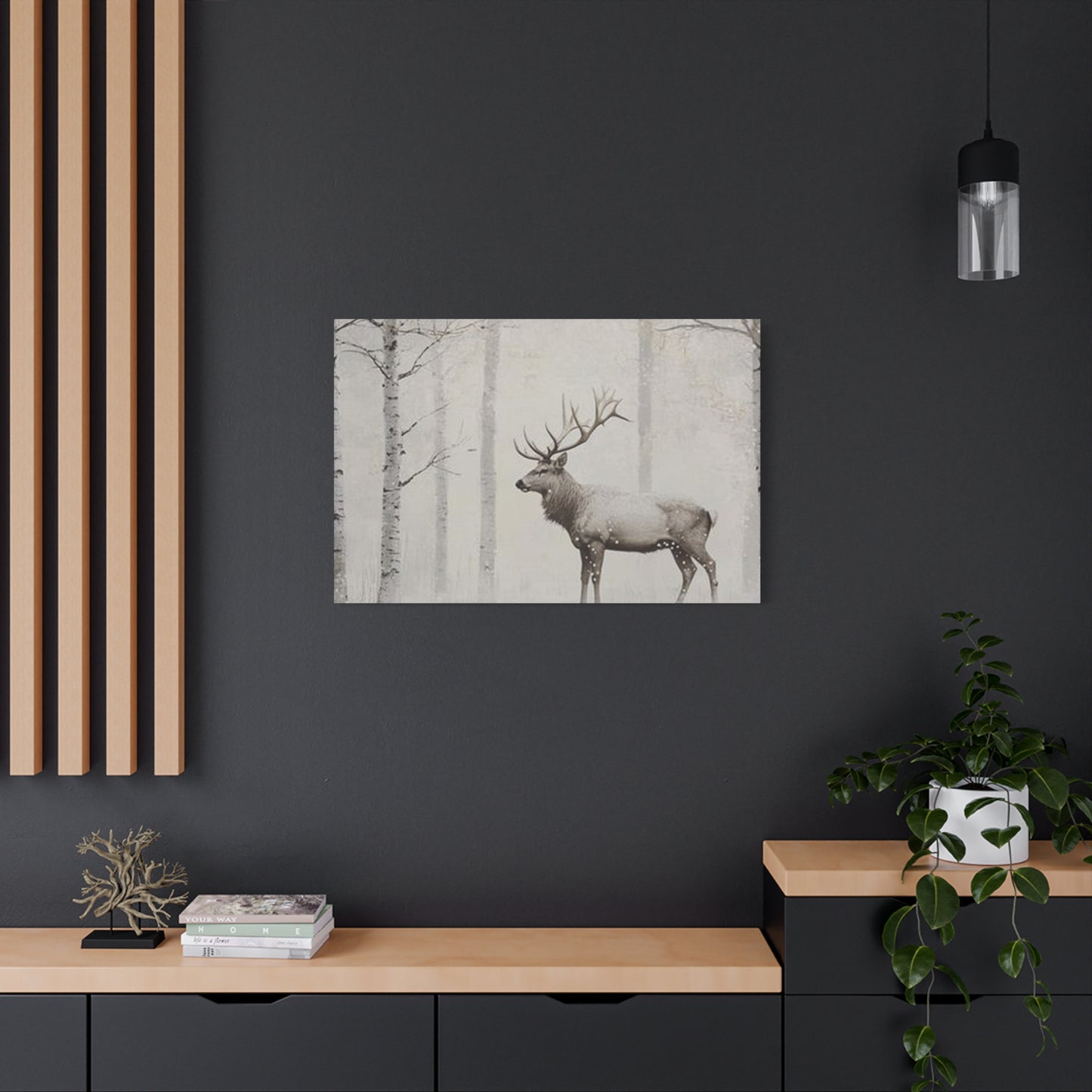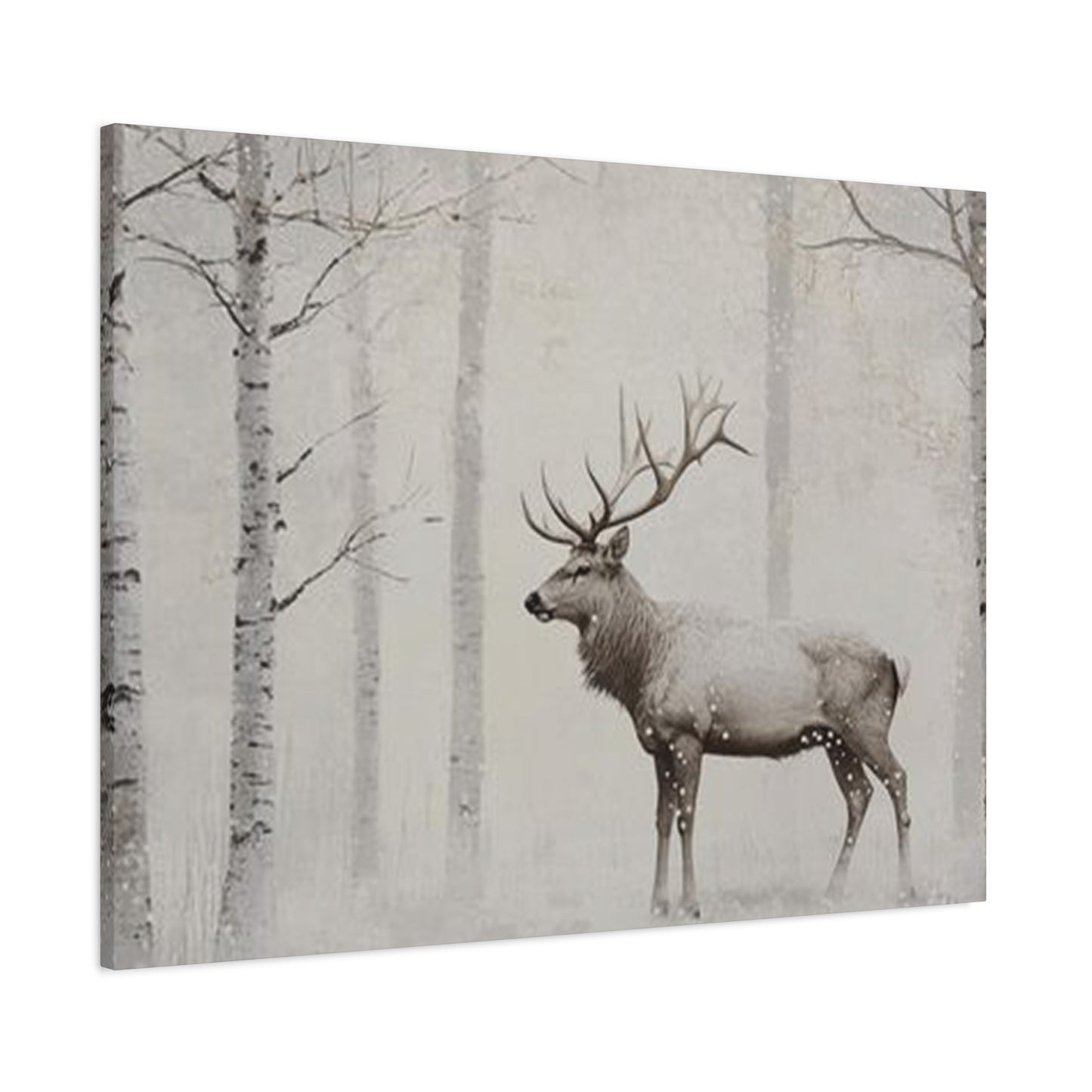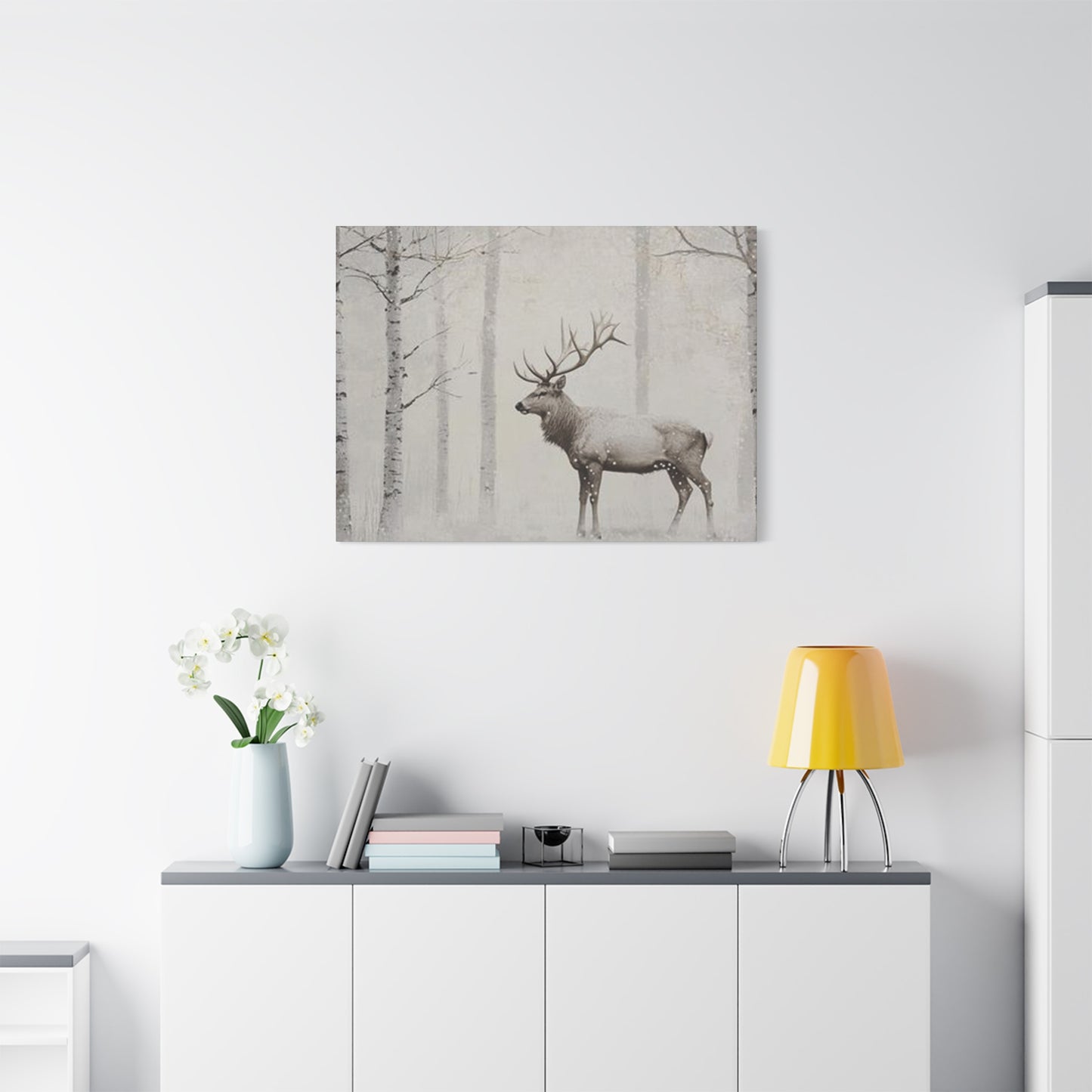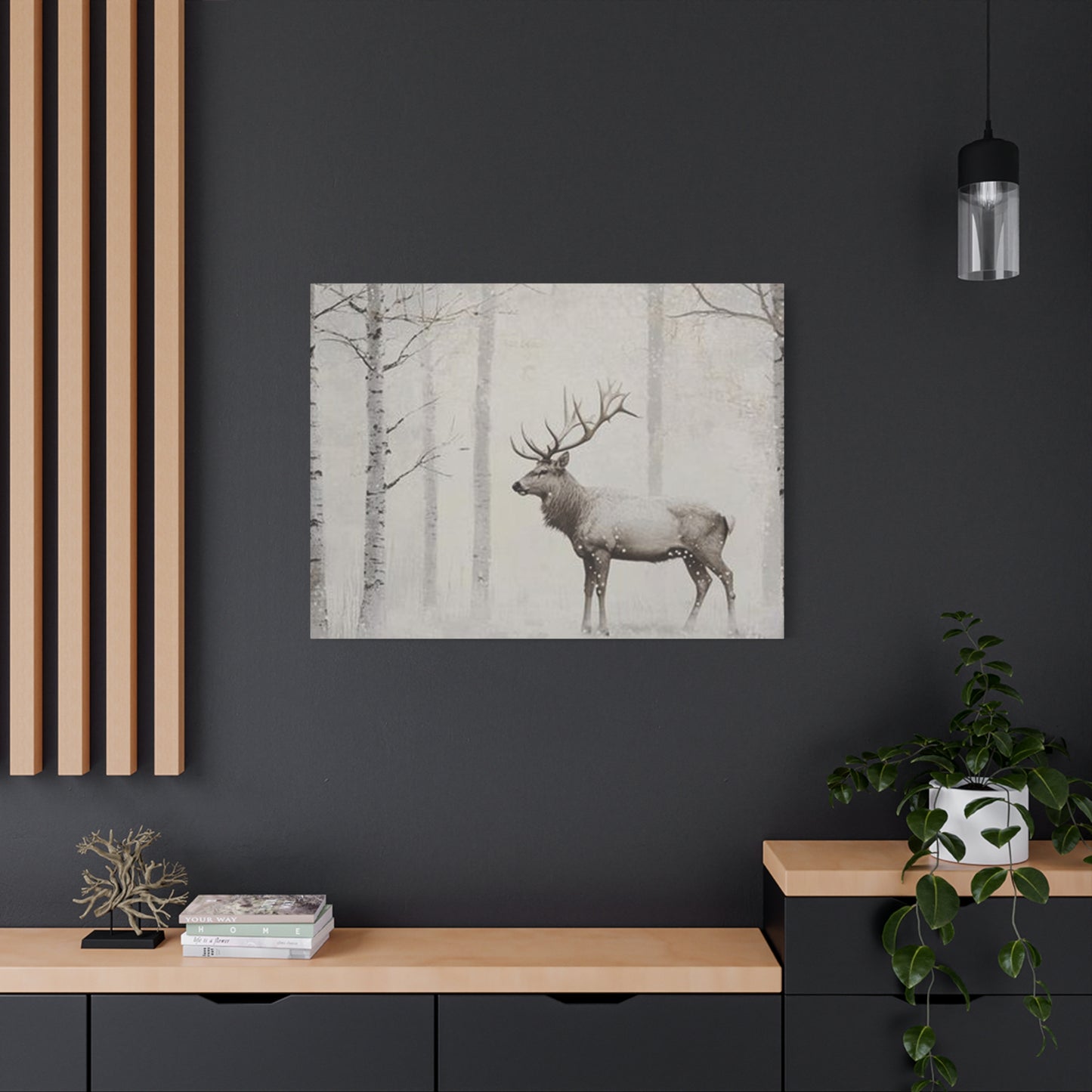Deer In Snow Painting Wall Art & Canvas Prints
Deer In Snow Painting Wall Art & Canvas Prints
Couldn't load pickup availability
Majestic Winter Wildlife: Creating Stunning Deer In Snow Painting Wall Art That Transforms Your Living Spaces
The ethereal beauty of winter landscapes combined with graceful wildlife creates an irresistible subject for artistic expression. When you envision a serene woodland scene where elegant creatures stand amid pristine white powder, you're imagining one of nature's most captivating tableaux. This comprehensive exploration delves into every aspect of creating, appreciating, and displaying artwork featuring these magnificent animals in their frozen habitat, offering insights that span from artistic conception to final placement in your home.
Why Winter Wildlife Imagery Captivates Hearts Across Generations
Throughout human civilization, people have been drawn to representations of animals in their natural environments. The combination of delicate snowflakes, bare winter trees, and the noble presence of woodland creatures creates a visual narrative that speaks to something primal within us. When you hang a deer in snow painting wall art piece in your space, you're not merely adding decoration—you're inviting the tranquility of untouched wilderness into your daily environment.
The allure of these winter scenes stems from multiple factors. First, there's the stark contrast between the warm earth tones of animal fur and the cool whites and blues of snow-covered terrain. This natural opposition creates visual drama that immediately catches the eye. Second, these creatures represent qualities that resonate deeply with human values: grace, survival, family bonds, and peaceful coexistence with harsh conditions. Third, winter landscapes possess an inherent stillness that modern life rarely offers, making such artwork a portal to calm contemplation.
Artists throughout centuries have recognized the magnetic pull of wildlife in frozen settings. From ancient cave paintings depicting hunters tracking game through snow to contemporary photorealistic renderings, this subject matter has remained consistently popular. The reasons are manifold—these scenes evoke nostalgia for simpler times, connection with the natural world, and appreciation for beauty that exists independently of human creation.
When you select deer in snow painting wall art for your environment, you're participating in this ancient tradition of bringing natural beauty indoors. The piece becomes a window to wilderness, especially valuable for those living in urban settings where direct connection with nature is limited. Studies have shown that even visual representations of natural scenes can reduce stress levels and improve mental well-being, making such artwork functional beyond its aesthetic appeal.
Exploring Various Artistic Styles For Winter Wildlife Representations
The world of visual art offers countless approaches to depicting woodland creatures in snowy environments. Understanding these different styles helps you select pieces that align with your personal taste and complement your existing decor. Each artistic movement brings unique qualities to the subject matter, from precise realism to abstract interpretation.
Realism remains perhaps the most popular approach for animal portraiture in winter settings. These works feature meticulous attention to detail, capturing every subtle gradation of fur texture, the crystalline structure of individual snowflakes, and the precise play of light across frozen surfaces. Artists working in this style often spend hundreds of hours perfecting their craft, studying anatomy, behavior patterns, and environmental conditions to achieve authenticity that rivals photography. When you bring realistic deer in snow painting wall art into your home, you're acquiring a piece that showcases exceptional skill and dedication.
Impressionistic interpretations offer a different experience altogether. Rather than focusing on precise details, these works capture the essence and emotional atmosphere of the scene. Brushstrokes remain visible, colors blend in unexpected ways, and the overall effect suggests movement and life rather than frozen stillness. This style works particularly well for larger spaces where viewers experience the work from a distance, allowing the eye to complete the image from suggested forms and color relationships.
Abstract approaches to wildlife winter scenes challenge conventional representation entirely. These pieces might reduce the subject to geometric shapes, focus on color relationships that bear no resemblance to natural hues, or fragment the image across the canvas in unexpected ways. While less immediately recognizable, abstract deer in snow painting wall art can create powerful emotional responses and serve as compelling conversation pieces. They work especially well in contemporary or minimalist interiors where traditional realistic artwork might feel incongruous.
Watercolor renderings bring a delicate, ethereal quality to winter wildlife scenes. The transparent nature of the medium creates soft edges and luminous colors that perfectly capture the dreamy quality of snow-muffled landscapes. The way watercolor pigments blend and flow mirrors the organic patterns found in nature, making this medium particularly suited to subjects involving water in its frozen form. These lighter, more delicate pieces often work beautifully in bedrooms, meditation spaces, or other areas where calm contemplation is desired.
Oil paintings offer rich, deep colors and textures that add dimension and presence to winter scenes. The thick application of paint creates physical texture on the canvas surface, adding a tactile element to the visual experience. Oil's slow drying time allows artists to blend colors seamlessly and make adjustments throughout the creative process, resulting in works with sophisticated color relationships and atmospheric depth. For traditional or classical interiors, oil-based deer in snow painting wall art provides weight and gravitas.
Understanding Color Theory In Frozen Landscape Artwork
The palette choices artists make when creating winter wildlife scenes dramatically impact the mood and effectiveness of the final piece. While snow might seem to limit color options to whites and grays, experienced artists know that frozen water reflects and absorbs light in complex ways, creating subtle color variations that bring winter landscapes to life.
Snow is rarely pure white in artistic representations. Shadows on snow typically contain blues, purples, or even greens depending on the time of day and atmospheric conditions. Early morning snow might show pink or peach tones from sunrise, while evening snow often appears lavender or deep blue. Midday snow in direct sunlight might have warm yellow highlights. These subtle color shifts prevent monotony and create visual interest across the composition.
The warm tones of animal fur provide crucial contrast against cool winter backgrounds. Browns, tans, russets, and creams stand out dramatically against white and blue surroundings, naturally drawing the viewer's eye to the wildlife subjects. Skilled artists understand how to modulate these warm tones, using cooler browns in shadows and warmer highlights where light strikes the fur directly. This attention to color temperature creates dimensionality and realism.
Sky colors in winter scenes vary enormously depending on weather conditions and time of day. Clear winter skies often appear deeper, more saturated blues than summer skies due to crisp, dry air. Overcast conditions create neutral grays ranging from warm to cool. Sunrise and sunset during winter months can produce spectacular pinks, oranges, and purples that seem intensified against snow. When selecting deer in snow painting wall art, consider how the sky colors in the piece will interact with your room's existing color scheme.
Vegetation peaking through snow adds additional color opportunities. Dried grasses and seedheads provide golds and browns. Evergreen trees contribute deep greens that appear almost black in shadow. Bare deciduous tree bark ranges from gray to brown to reddish tones. These elements break up expanses of white and provide compositional anchors that guide the viewer's eye through the scene.
Some artists employ limited palettes, restricting themselves to perhaps five or six colors throughout the entire piece. This approach creates harmony and unity across the composition. Others embrace full-spectrum color, finding subtle hues everywhere in the scene. Neither approach is superior—they simply create different aesthetic experiences. Understanding your preference helps you select artwork that will provide lasting satisfaction.
Compositional Elements That Create Powerful Winter Wildlife Scenes
Beyond color, the arrangement of elements within the frame determines whether a piece feels balanced, dynamic, static, or chaotic. Strong composition guides the viewer's eye through the work, creates focal points, and establishes relationships between different elements. Understanding these principles helps you evaluate potential purchases and recognize truly exceptional pieces.
The rule of thirds provides a foundational guideline for pleasing composition. Imagine dividing the canvas into nine equal sections with two horizontal and two vertical lines. Placing important elements along these lines or at their intersections typically creates more dynamic, interesting compositions than centering everything. In deer in snow painting wall art, the main animal subject often sits at one of these intersection points, with supporting elements balanced elsewhere in the frame.
Leading lines draw the viewer's eye toward focal points. In winter landscapes, these might be fence lines, paths through snow, streams, tree trunks, or shadows. Effective artists use these linear elements deliberately, creating visual pathways that explore the entire composition before settling on the primary subject. Without leading lines, eyes tend to wander aimlessly or fixate immediately on one element without exploring the rest of the work.
Negative space—areas of the composition without detailed elements—provides breathing room and prevents visual clutter. In snow scenes, expanses of relatively unmarked white serve this function. Too much detail everywhere overwhelms the eye and diminishes impact. Strategic use of negative space creates contrast that makes detailed areas more powerful. The empty space itself can become a compositional element, with its shape and placement contributing to overall balance.
Foreground, middle ground, and background layers create depth and three-dimensionality on a two-dimensional surface. Winter scenes lend themselves particularly well to this layering. Perhaps dried grasses occupy the immediate foreground, the deer stand in the middle distance, and a tree line defines the background. Each layer might employ different levels of detail and contrast, with distant elements becoming softer and less distinct. This atmospheric perspective mimics how human eyes perceive depth in real environments.
Symmetrical compositions create formal, calm, stable feelings. The visual weight balances evenly on either side of a central axis. Asymmetrical arrangements feel more dynamic and modern, with visual weight distributed unevenly but still achieving overall balance through careful placement of elements with different visual mass. Most deer in snow painting wall art employs some degree of asymmetry, as perfect symmetry can feel static and less engaging.
Selecting The Perfect Size And Format For Your Space
Artwork dimensions dramatically impact how a piece functions in your environment. Too small and the work gets lost, failing to command appropriate attention. Too large and it overwhelms the space, making rooms feel cramped or cluttered. Finding the optimal size requires considering multiple factors including wall dimensions, viewing distance, and the scale of surrounding furniture.
For walls above sofas or beds, a general guideline suggests artwork should span two-thirds to three-quarters of the furniture width. This proportion creates visual connection between furniture and artwork without appearing either cramped or floating disconnected. A sofa measuring six feet wide might pair well with deer in snow painting wall art measuring four to five feet across. However, this is merely a starting point—personal preference and specific circumstances may justify deviation.
Viewing distance affects perceived size and impact. In a large living room where people typically sit fifteen feet from a wall, artwork needs substantial dimensions to register properly. That same piece in a narrow hallway viewed from three feet away might feel overwhelming. Consider the typical distances from which the artwork will be viewed when making size selections. Larger scale generally suits expansive spaces, while smaller works better fit intimate areas.
Vertical versus horizontal orientation influences room perception. Horizontal pieces emphasize width, making walls appear broader. They suit placement above long furniture pieces and in wide spaces. Vertical works draw the eye upward, creating impressions of height. They work well on narrow wall sections, in rooms with low ceilings where upward emphasis is desirable, or in spaces with tall furniture. Many winter wildlife scenes naturally suit horizontal formats due to landscape orientation, but vertical compositions emphasizing tree trunks or standing animals also prove effective.
Multiple smaller pieces arranged as a gallery wall offer an alternative to single large works. This approach provides flexibility, allowing you to curate a collection of related deer in snow painting wall art pieces that together create significant visual impact. Gallery walls work particularly well in contemporary spaces and can grow over time as you discover new pieces. Careful planning of spacing, alignment, and frame coordination ensures cohesive results.
Consider ceiling height when evaluating scale. In rooms with standard eight-foot ceilings, artwork heights typically range from two to four feet. Spaces with higher ceilings can accommodate taller pieces without them feeling cramped. The center of the artwork should typically hang at eye level—approximately 57 to 60 inches from the floor to the center of the piece—though this guideline flexes based on specific circumstances.
Framing Choices That Enhance Winter Wildlife Artwork
Frames serve multiple purposes beyond simple protection. They create boundaries that separate artwork from surrounding walls, influence color perception, contribute to overall style, and can either enhance or detract from the piece they surround. Selecting appropriate framing for deer in snow painting wall art requires consideration of the artwork itself, your interior design style, and practical factors.
Wood frames offer warmth and natural beauty that complements wildlife subjects. The grain patterns and organic textures create visual connections to forest settings depicted in the artwork. Wood species vary enormously in color from pale blond woods to rich dark walnut or ebony-stained options. Lighter woods like maple or ash maintain brightness and work well with high-key winter scenes dominated by whites and pale blues. Darker woods provide dramatic contrast and suit works with deeper shadows or evening lighting.
Metal frames contribute modern, clean aesthetics. Sleek profiles in silver, gold, bronze, or black finishes offer minimalist elegance that directs focus to the artwork rather than the frame. Metal frames particularly suit contemporary or industrial interiors where traditional wood might feel incongruous. Their slim profiles maximize visible artwork while still providing structural support and protection.
Frame width affects visual impact. Narrow frames create minimal interruption between artwork and wall, allowing pieces to feel more integrated into the space. Wide frames make bold statements and work well with larger pieces or in traditional interiors where substantial framing is expected. For deer in snow painting wall art, consider whether you want the frame to recede into the background or serve as a prominent design element itself.
Matting creates breathing space between artwork and frame, preventing the piece from feeling cramped or crowded. Mat colors influence how colors within the artwork are perceived. White or cream mats brighten overall appearance and work well with high-key winter scenes. Gray mats provide neutral separation without adding warmth or coolness. Colored mats can pull specific hues from the artwork, creating color continuity, but risk overwhelming or clashing if not carefully selected. Multiple mats in different colors create sophisticated, museum-quality presentations.
Glass or acrylic glazing protects artwork from dust, humidity, and physical damage. Regular glass works well but adds weight and can break. Acrylic offers lighter weight and shatter resistance but scratches more easily. UV-protective glazing—either glass or acrylic—prevents fading from sunlight exposure, crucial for maintaining color vibrancy in pieces displayed where direct or indirect sunlight reaches them. Non-glare coatings reduce reflections but can slightly soften image clarity. Weigh these factors based on your specific situation.
Placement Strategies For Maximum Visual Impact In Your Home
Where you hang deer in snow painting wall art within your home affects both the piece's visibility and the room's overall atmosphere. Strategic placement considers factors including lighting, sightlines, thematic appropriateness, and relationships with surrounding elements. Thoughtful positioning ensures your investment receives appropriate attention and contributes positively to your living environment.
Living rooms serve as primary gathering spaces where artwork receives substantial viewing time. Above sofas represents the most common placement, creating a focal point visible upon entering the room. Ensure the piece relates proportionally to the furniture beneath it—too small appears insignificant, too large feels oppressive. Leave appropriate space between the sofa back and the bottom of the artwork, typically six to twelve inches, creating visual connection without cramping.
Dining rooms benefit from artwork that sparks conversation and creates ambiance during meals. Winter wildlife scenes contribute calm, contemplative energy appropriate for leisurely dining experiences. Consider the view from seated positions around the table—artwork hung too high becomes invisible to diners. In dining rooms with buffets or sideboards, these furniture pieces provide ideal foundations for artwork placement, following similar proportional guidelines as sofa arrangements.
Bedrooms call for artwork that promotes relaxation and peaceful states of mind. The serene quality of deer in snow painting wall art makes it particularly suited to sleeping spaces. Position artwork where it's visible from the bed, either on the wall opposite the foot of the bed or above the headboard. Avoid hanging heavy pieces directly over where your head rests for psychological comfort. The calm winter palette typically found in these works complements the restful purpose of bedroom spaces.
Home offices and studies benefit from artwork that provides brief mental respites during work. A winter scene with wildlife offers a momentary escape into nature, refreshing focus and reducing stress. Position artwork within easy sight from your work position but not directly behind computer monitors where screen glare might interfere. The contemplative quality of these scenes makes them ideal for spaces dedicated to focused thought and creativity.
Hallways and staircases often become neglected spaces that could showcase artwork effectively. Long narrow hallways suit series of smaller pieces or a single horizontal work that draws the eye down the corridor. Stairway walls provide opportunities for vertical arrangements or stepped gallery walls that follow the angle of the stairs. These transitional spaces benefit from artwork that maintains visual interest without demanding intensive attention.
Lighting dramatically affects how artwork appears. Natural light changes throughout the day, altering colors and creating different moods. Position pieces where direct sunlight won't strike them for extended periods, as UV exposure causes fading over time. Artificial lighting should illuminate artwork evenly without creating glare on protective glazing. Picture lights mounted to frames or track lighting positioned at 30-degree angles provide focused illumination that enhances visual impact during evening hours.
Various Mediums And Their Unique Characteristics In Wildlife Art
The materials and methods artists employ fundamentally shape the finished work's appearance, texture, and emotional resonance. Each medium offers distinct advantages and creates different viewer experiences. Understanding these differences helps you appreciate the skill involved in various pieces and select works that align with your aesthetic preferences for deer in snow painting wall art.
Oil paint has dominated fine art for centuries due to its versatility and richness. The pigments suspended in oil create intense, saturated colors that maintain vibrancy over time. Oil's slow drying time allows artists to blend colors seamlessly, creating subtle transitions and atmospheric effects particularly suited to depicting snow and winter light. The paint can be applied thickly for textured impasto effects or thinned to transparent glazes, offering enormous range within a single medium. Oil paintings typically command higher prices due to the time investment required and the medium's association with fine art traditions.
Acrylic paint provides a modern alternative with different working properties. Water-soluble when wet but permanent once dry, acrylics offer convenience and versatility. They dry quickly, allowing rapid layering and shorter completion times. While they can mimic oil painting effects, acrylics possess their own distinct character with slightly different color properties and surface qualities. Many contemporary artists prefer acrylics for their ease of use, lack of toxic fumes, and quick drying time. Acrylic deer in snow painting wall art often features bright, crisp colors and clean edges.
Watercolor creates delicate, luminous effects impossible to achieve with opaque paints. The transparent washes allow white paper to shine through, creating a particular luminosity perfect for depicting snow and winter light. Watercolor demands confidence—mistakes prove difficult to correct, and the medium requires working from light to dark, planning ahead rather than making adjustments as you go. This challenge results in artwork with a spontaneous, fresh quality. Watercolor pieces typically work best under protective glazing due to the medium's delicate nature.
Pastel offers unique textural qualities, existing somewhere between painting and drawing. The pigment sticks create soft, velvety surfaces with rich colors. Pastels excel at capturing the subtle color variations in snow and the soft textures of animal fur. The medium allows both precise detailed work and broad, expressive strokes. However, pastel artwork requires careful handling and protective framing as the pigment sits on the surface rather than bonding permanently with the support. Properly executed and protected, pastel deer in snow painting wall art possesses distinctive beauty.
Mixed media approaches combine multiple materials and methods within a single piece. An artist might use watercolor for atmospheric backgrounds, acrylic for animal subjects, ink for fine details, and collage elements for textural interest. These combinations create visual complexity and unique surfaces that single-medium works cannot achieve. Mixed media pieces often project contemporary sensibility and artistic experimentation. They challenge traditional categories and create opportunities for innovation.
Printmaking processes create multiples rather than unique originals. Techniques include etching, lithography, screen printing, and more. While prints are reproductions, limited edition prints signed and numbered by artists carry significant value and allow broader access to artwork at lower price points than unique originals. High-quality prints of deer in snow painting wall art make it possible to own work by artists whose originals exceed your budget. Giclée prints use archival inks and museum-quality papers or canvases, producing reproductions virtually indistinguishable from originals at accessible prices.
The Symbolic Meaning Behind Deer Imagery Across Cultures
Beyond aesthetic appeal, wildlife imagery carries symbolic weight accumulated across centuries of human culture. Understanding these associations adds depth to your appreciation of deer in snow painting wall art and may influence your selection process. Different cultures attribute various meanings to these graceful creatures, though common themes emerge across geographical and temporal boundaries.
In many Native American traditions, these animals represent gentleness, sensitivity, and intuition. They symbolize the ability to move through life with grace and to be attuned to subtle signs and warnings. The creatures' acute awareness of their surroundings and quick reflexes when danger threatens make them emblems of vigilance and survival instincts. Artwork featuring these animals might remind viewers to trust their instincts and maintain awareness of their environments.
Celtic mythology associates these creatures with the forest, femininity, and the supernatural realm. They appear as messengers between worlds, guides to the otherworld, or transformed humans under enchantment. The white variations particularly connect with magical or divine qualities. This mystical association lends ethereal quality to winter wildlife scenes, suggesting realms beyond ordinary experience. Hanging such imagery invites contemplation of mysteries and connections with nature's spiritual dimensions.
Christian iconography sometimes employs these animals as symbols of piety, devotion, and the search for spiritual sustenance. Biblical references describe the creatures seeking water as souls seeking divine connection. This religious symbolism adds contemplative dimension to wildlife artwork, making it appropriate for meditation spaces or areas dedicated to spiritual practice. Even viewers unaware of specific religious connotations often sense the peaceful, reverent quality these images convey.
In Japanese aesthetics, animals in natural settings embody principles of simplicity, tranquility, and the transient beauty of nature. The changing seasons provide constant themes in Japanese art, with winter representing both hardship and purity. Wildlife persisting through cold months demonstrates resilience and the cycles of life. Deer in snow painting wall art aligns beautifully with these aesthetic principles, particularly in minimalist or zen-inspired interiors.
Contemporary Western culture often associates these creatures with wilderness, conservation, and escape from urban life. They represent what remains wild and free in an increasingly developed world. Displaying such imagery might express commitment to environmental values or longing for simpler, more natural lifestyles. The animals become symbols of what we've lost or what we're working to preserve for future generations.
The seasonal context of winter scenes adds additional symbolic layers. Winter represents dormancy, reflection, rest, and preparation for renewal. It suggests survival through difficult times and the promise of spring to come. Wildlife thriving in snow demonstrates adaptability and resilience. These associations make winter scenes particularly meaningful during life transitions or challenging periods when reminders of survival and eventual renewal provide comfort.
Caring For And Preserving Your Artwork Investment
Quality artwork represents significant financial and emotional investment deserving proper care to maintain its condition for decades or generations. Different mediums and formats require specific handling, but general principles apply across categories. Proper preservation ensures your deer in snow painting wall art retains its beauty and value throughout its life in your collection.
Environmental conditions profoundly affect artwork longevity. Temperature fluctuations cause materials to expand and contract, eventually leading to cracking, warping, or separation. Maintain stable temperatures between 65 and 75 degrees Fahrenheit, avoiding placement near heating vents, radiators, or air conditioning units that create localized temperature changes. Basements and attics typically experience more dramatic temperature swings and higher humidity levels, making them poor storage or display locations.
Humidity control proves equally critical. Too much moisture encourages mold growth, causes paper to buckle, and promotes deterioration of canvas and paint layers. Insufficient humidity makes materials brittle and prone to cracking. Ideal relative humidity ranges between 40 and 50 percent. In climates with extreme humidity levels, dehumidifiers or humidifiers help maintain appropriate levels. Never hang artwork on exterior walls where temperature and humidity differ dramatically from interior walls.
Light exposure represents the most significant threat to artwork longevity. Both natural and artificial light contain ultraviolet radiation that breaks down pigments, causing fading and color shifts. Direct sunlight proves particularly damaging, capable of noticeably fading colors within months. Even indirect natural light causes gradual deterioration. Position deer in snow painting wall art away from windows, or use UV-filtering glazing and window treatments to block harmful rays. LED lighting produces less UV than incandescent or fluorescent options, making it preferable for artwork illumination.
Dust accumulation dulls appearance and can scratch surfaces during cleaning if abrasive particles are present. Regular dusting prevents buildup—every two to three months for framed glazed pieces, though unglazed work requires professional attention. Use clean, soft microfiber cloths or specialized art dusters designed not to shed fibers. Never use commercial cleaning products, which may contain chemicals harmful to artwork. For glazed pieces, slightly dampened cloths can remove fingerprints or smudges, but avoid excess moisture near frame edges where it might seep behind glazing.
Structural maintenance addresses frames and hanging systems. Periodically inspect frames for separating joints, loose corners, or degrading adhesives. Check hanging hardware for security—wall anchors and hooks should remain firmly attached, and wires or hanging systems on frames should show no signs of fraying or weakness. Artwork falling from walls can suffer irreparable damage. Address any structural concerns promptly, seeking professional help for significant issues.
Professional conservation becomes necessary when damage occurs or preventive work is needed. Conservators possess specialized training in artwork preservation and repair. They can clean paintings too delicate for home care, repair tears or punctures, address mold growth, restore faded colors in some cases, and perform countless other interventions. While conservation services are expensive, they're worthwhile for valuable or irreplaceable pieces. Research conservators carefully, seeking those with credentials from recognized conservation programs and experience with your artwork's specific medium.
Insurance provides financial protection against damage, theft, or loss. Standard homeowners or renters insurance typically covers artwork up to certain limits, but valuable pieces may require additional riders or specialized fine art insurance policies. Document your collection with photographs, purchase receipts, appraisals, and artist information. Keep these records separate from the artwork itself—ideally in a secure location or digital cloud storage—so they remain accessible if the artwork is damaged or stolen.
Discovering Emerging Artists And Building Your Collection
Building an art collection offers immense satisfaction beyond the pleasure of individual pieces. Collections tell stories, reflect evolving tastes, and can appreciate significantly in value over time. Whether you're purchasing your first deer in snow painting wall art or adding to an established collection, understanding how to discover artists and make informed selections enhances the collecting experience.
Local art fairs and festivals provide opportunities to meet artists personally and view work before purchasing. These events often feature emerging and mid-career artists whose prices remain accessible while their talents develop. Speaking directly with artists offers insights into their processes, inspirations, and future directions. You might discover someone whose work resonates deeply and follow their career as they gain recognition. The personal connection formed through direct purchase adds meaning beyond the artwork itself.
Online marketplaces have democratized art collecting, providing access to artists worldwide regardless of your location. Numerous platforms connect artists directly with collectors, eliminating traditional gallery intermediaries and reducing prices. However, purchasing online requires extra diligence. Request detailed photographs showing the entire piece and close-ups of surface texture. Ask about materials, size, condition, and whether colors are accurately represented. Understand return policies before committing. Reputable platforms provide guarantees and facilitate returns if pieces don't meet expectations.
Social media platforms allow artists to showcase work and build followings directly with collectors. Following artists whose work appeals to you provides regular exposure to new pieces as they're created. Many artists announce available works through social channels first, giving followers first opportunity to purchase before pieces reach galleries or websites. Engaging thoughtfully with artists' posts builds relationships that may lead to opportunities like commissioning custom pieces or receiving advance notice of upcoming work.
Artist studios and open studio events offer intimate access to creative spaces and processes. Many artists open their working spaces periodically, allowing visitors to see works in progress, finished pieces, and the environment where creation happens. These visits provide context that deepens appreciation and understanding. You might see the deer in snow painting wall art you purchase in the very space where it was created, meeting the artist and learning about their journey.
Galleries serve traditional roles connecting artists and collectors while providing curation and quality assurance. Gallerists develop expertise in their specialized areas and carefully select artists whose work meets their standards. Gallery representation signals an artist has achieved certain recognition and professionalism. While gallery prices include markup covering overhead and commissions, you receive expertise, potentially better investment value as galleries promote represented artists, and ongoing relationships that may include first access to new work.
Art consultants offer personalized services for serious collectors. They leverage industry relationships, market knowledge, and expertise to help clients build cohesive collections aligned with their tastes and budgets. Consultants can access works unavailable through public channels, negotiate pricing, arrange conservation or framing, and provide investment guidance. For collectors making significant commitments, consultant fees prove worthwhile for the expertise and services provided.
When evaluating potential purchases, consider both aesthetic appeal and objective quality markers. Technical skill in the medium demonstrates professional competence versus hobbyist work. Composition strength determines whether pieces remain engaging over years of viewing. Color relationships create harmony or discord. Emotional resonance indicates whether the work speaks to something meaningful beyond surface decoration. Originality of vision separates artists interpreting subjects in fresh ways from those merely copying what's been done before.
Provenance and documentation add value and facilitate future sales should you decide to part with pieces. Request certificates of authenticity from artists or galleries. Keep all purchase documentation, including receipts, artist statements, and any exhibition history. For pieces by established artists, research their market history and typical price ranges. Online databases track auction results and private sales, providing context for current pricing.
Commissioning Custom Pieces Tailored To Your Vision
While selecting from available artwork offers satisfaction, commissioning custom pieces provides entirely different rewards. Working directly with an artist to create deer in snow painting wall art specifically for your space and preferences results in truly unique work impossible to find elsewhere. The collaborative process becomes part of the artwork's value, and the finished piece carries special significance as something created just for you.
Identifying appropriate artists for commissions begins with researching their existing work. Look for artists whose style aligns with your vision and whose technical skills match what you're imagining. Review their portfolios carefully, noting how they handle similar subjects, their color tendencies, compositional approaches, and the range of work they've produced. An artist who creates only abstract work probably isn't suitable for a realistic wildlife commission, regardless of their talent.
Initial conversations establish whether the collaboration will work. Share your vision clearly but allow room for the artist's interpretation and expertise. Describe the space where the work will hang, including dimensions, colors, lighting, and the atmosphere you're hoping to create. Provide reference images if you have specific compositional ideas, but remain open to the artist's suggestions. They may see possibilities you haven't considered and can guide you toward choices that leverage their particular strengths.
Budget discussions should happen early and honestly. Custom work typically costs more than purchasing available pieces due to the personalized nature and artist's time investment. Prices vary enormously based on the artist's career stage, reputation, piece size, medium, and complexity. Establish clear expectations about cost, payment terms, timeline, and what happens if you're unsatisfied with the result. Written agreements protect both parties and prevent misunderstandings.
The creation process may involve multiple stages. Artists might provide sketches or compositional studies for approval before beginning final execution. This allows course corrections early when changes are easy rather than after substantial work has been completed. Be responsive to requests for feedback but avoid micromanaging. You've hired the artist for their expertise and vision—trust their process while ensuring the work develops in directions that satisfy your goals.
Timeline expectations should be realistic. Custom pieces typically require several weeks to several months depending on size, complexity, and the artist's schedule. Rush jobs usually incur additional fees and may compromise quality. Plan ahead for specific deadlines like holidays or moving dates. Understand that artistic work doesn't always progress linearly—some days are more productive than others, and sometimes artists need to step back and return with fresh perspective.
Communication throughout the process keeps everyone aligned. Regular updates with progress photos let you see how the piece develops and provide opportunities for minor adjustments. However, constant checking can disrupt the artist's flow and creative focus. Establish a communication schedule that provides adequate updates without being intrusive. Trust builds as you see the work progressing in ways that meet or exceed your expectations.
Upon completion, carefully inspect the finished deer in snow painting wall art before final acceptance. Ensure it matches your agreement regarding size, subject, style, and quality. Verify that materials are as specified and that the piece is ready for hanging with appropriate hardware. Address any concerns immediately while the artist can still make adjustments. Once you accept the work and make final payment, resolution becomes much more complicated.
Conclusion
While some artwork serves as permanent fixtures in your home, rotating pieces seasonally prevents visual stagnation and allows you to enjoy a broader collection. Deer in snow painting wall art particularly suits winter display, creating special anticipation for its reappearance each year while making room for other works during warmer months. This approach maximizes your art investment and keeps your living spaces feeling dynamic.
Strategic rotation requires sufficient collection depth. Ideally, you'd have at least two to four pieces for each location you plan to rotate, providing options without requiring constant changes. Rotation might happen quarterly with the seasons, twice annually for winter and summer pieces, or on any schedule that suits your lifestyle. Some collectors rotate monthly, treating their walls as ever-changing galleries. Determine what frequency feels manageable without becoming burdensome.
Storage between display periods requires careful planning. Wrapped artwork stored in climate-controlled areas maintains condition between appearances. Acid-free tissue paper or conservation-quality bubble wrap protects surfaces without causing damage. Never wrap artwork directly in newsprint, as ink transfers to surfaces over time. Store framed pieces upright rather than flat-stacked, which places pressure on glazing and can lead to cracking. Unframed pieces store flat in portfolios or conservation boxes designed for this purpose.
Documentation systems help track what you own and where it's stored. Photograph each piece and create a simple database noting title, artist, dimensions, medium, acquisition date, price, location, and any special care requirements. This system prevents forgotten pieces from languishing in storage and helps plan rotations seasonally. Digital systems offer easy searching and updating, while physical notebooks provide low-tech reliability. Choose whatever format you'll actually maintain.
Rotation offers opportunities to reassess arrangements and try new configurations. That piece that felt wrong in the living room might prove perfect in the bedroom. Changing seasons often inspire interior design adjustments—lighter textiles in summer, cozier elements in winter—and artwork rotations can complement these changes. Winter wildlife scenes enhance holiday decorating naturally, creating cohesive seasonal aesthetics.
Some locations suit permanent artwork while others benefit from rotation. Major architectural focal points—the wall above the living room fireplace, the entry hall statement piece—often deserve permanent installations that become identifying features of your home. Secondary locations offer greater flexibility for change. Guest bedrooms, hallways, home offices, and breakfast nooks can handle frequent updates without feeling disorienting.
Rotation prevents visual habituation—the tendency to stop noticing things we see every day. When you hang deer in snow painting wall art each winter after months of absence, you experience it freshly, noticing details that had become invisible through daily exposure. The annual reappearance becomes a pleasure to anticipate, marking seasonal transitions and creating new appreciation for work you already own.
Share

